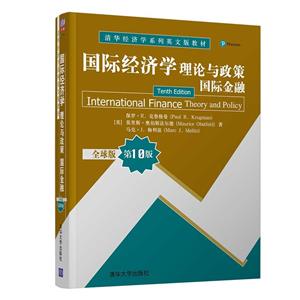
作者:彭华
页数:391
出版社:高等教育出版社
出版日期:2020
ISBN:9787040533699
电子书格式:pdf/epub/txt
内容简介
中国丹霞被誉为“中国地学国粹”,是中国乃至世界上最典型、最优美、生态环境多样、景观配置最佳的丹霞景观的代表,具有突出的丹霞地貌科学价值和美学价值,具有良好的生态环境价值。本书基于中国80多年的研究积累,在系统介绍了丹霞地貌最新科学体系和研究进展的基础上,阐述了中国丹霞的地质构造基础、地貌特征和演化、生物与生态、美学价值和地球科学价值,并简要介绍了六个世界自然遗产地的风采。本书既适合地理、地质、地貌专业人员和风景旅游管理人员阅读,也可作为科普读物。
本书特色
中国丹霞被誉为“中国地学国粹”,是中国乃至世界上最典型、最美、生态环境多样、景观配置最的丹霞景观的代表,具有突出的丹霞地貌科学价值和美学价值,具有良好的生态环境价值。本书基于中国80多年的研究积累,在系统介绍了丹霞地貌最科学体系和研究进展的基础上,阐述了中国丹霞的地质构造基础、地貌特征和演化、生物与生态、美学价值和地球科学价值,并简要介绍了六个世界自然遗产地的风采。本书既适合地理、地质、地貌专业人员和风景旅游管理人员阅读,也可作为科普读物。
目录
Part Ⅰ
1 The Basic Questions on Danxia Landform
1.1 Introduction of Danxia
1.2 Research History of Danxia Landform in China
1.2.1 Initial Stage (1928-1949)
1.2.2 Formative Development Stage (1950-1990)
1.2.3 The Great Development Stage (1991-2008)
1.2.4 Internationalization Stage (Since 2009)
1.3 Basic Concept
1.3.1 The Early Definition
1.3.2 New Definitions and Explanations
1.4 Essential Characteristics of Danxia Landforms
1.4.1 Basic Slope Morphology
1.4.2 The Complexity of the Slope Morphology
1.5 The Taxonomic Position and Classification System
1.5.1 The Discipline Ownership
1.5.2 The Taxonomic Position and Classification System
1.6 Distribution of Danxia Landforms in China
1.7 Development Mechanism of Danxia Landforms
1.7.1 Material Basis
1.7.2 Tectonic Control
1.7.3 Exogenic Forces
1.7.4 Evolution Process
2 Identification of the Property
2.1 Introduction
2.1.1 What’s China Danxia
2.1.2 Why Is China Danxia an Appropriate Serial World Natural Heritage
2.1.3 The Planned Sequence of China Danxia World Heritage
2.2 Identification of the Property
2.3 Value of Heritage on China Danxia
2.4 Summary to the Heritage Sites
3 Physical Geography
3.1 Geology and Geomorphology
3.2 Climate
3.3 Hydrology
3.4 Biotic Community and Ecological Environment
4 Geological Structure
4.1 Geotectonic Background
4.2 Stratigraphic Characteristics of the Heritage Sites
4.2.1 Stratigraphy
4.2.2 Lithology
4.2.3 The Effects of Stratigraphy and Lithology on the Development of Danxia Landform
4.3 Tectonics of the Heritage Sites
4.3.1 Geological Structure
4.3.2 Control of Faults and Joints on Hill Block Framework
4.3.3 Control of Terrain Occurrence on the Shape of Slope Surfaces
4.3.4 Influence of Neotectonic Movement on theProcess of Landform Evolution
4.4 Paleogeography and Paleontology of the Heritage Sites
4.5 Geological History of the Heritage Sites
4.5.1 The Stage of Crustal Foundation
1 The Basic Questions on Danxia Landform
1.1 Introduction of Danxia
1.2 Research History of Danxia Landform in China
1.2.1 Initial Stage (1928-1949)
1.2.2 Formative Development Stage (1950-1990)
1.2.3 The Great Development Stage (1991-2008)
1.2.4 Internationalization Stage (Since 2009)
1.3 Basic Concept
1.3.1 The Early Definition
1.3.2 New Definitions and Explanations
1.4 Essential Characteristics of Danxia Landforms
1.4.1 Basic Slope Morphology
1.4.2 The Complexity of the Slope Morphology
1.5 The Taxonomic Position and Classification System
1.5.1 The Discipline Ownership
1.5.2 The Taxonomic Position and Classification System
1.6 Distribution of Danxia Landforms in China
1.7 Development Mechanism of Danxia Landforms
1.7.1 Material Basis
1.7.2 Tectonic Control
1.7.3 Exogenic Forces
1.7.4 Evolution Process
2 Identification of the Property
2.1 Introduction
2.1.1 What’s China Danxia
2.1.2 Why Is China Danxia an Appropriate Serial World Natural Heritage
2.1.3 The Planned Sequence of China Danxia World Heritage
2.2 Identification of the Property
2.3 Value of Heritage on China Danxia
2.4 Summary to the Heritage Sites
3 Physical Geography
3.1 Geology and Geomorphology
3.2 Climate
3.3 Hydrology
3.4 Biotic Community and Ecological Environment
4 Geological Structure
4.1 Geotectonic Background
4.2 Stratigraphic Characteristics of the Heritage Sites
4.2.1 Stratigraphy
4.2.2 Lithology
4.2.3 The Effects of Stratigraphy and Lithology on the Development of Danxia Landform
4.3 Tectonics of the Heritage Sites
4.3.1 Geological Structure
4.3.2 Control of Faults and Joints on Hill Block Framework
4.3.3 Control of Terrain Occurrence on the Shape of Slope Surfaces
4.3.4 Influence of Neotectonic Movement on theProcess of Landform Evolution
4.4 Paleogeography and Paleontology of the Heritage Sites
4.5 Geological History of the Heritage Sites
4.5.1 The Stage of Crustal Foundation












